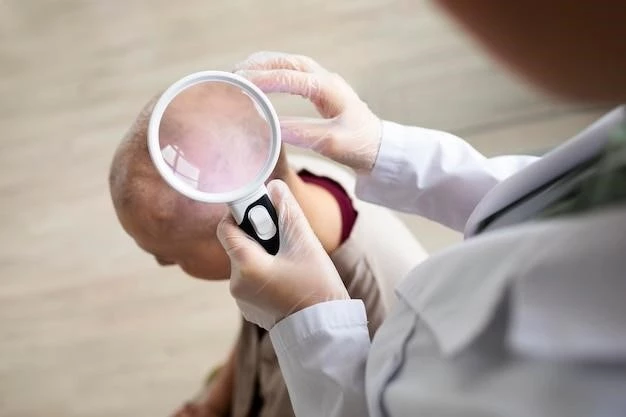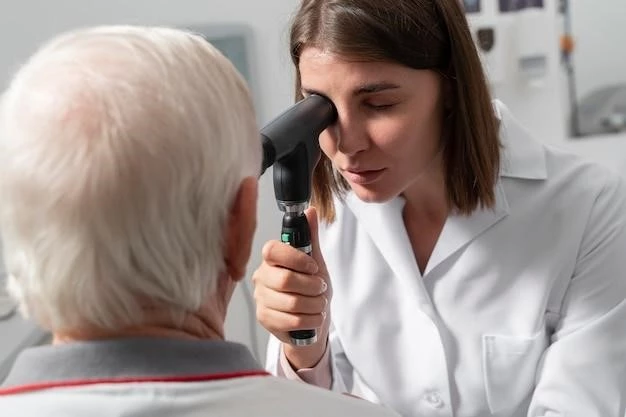Understanding Hemifacial Microsomia
Hemifacial microsomia is a congenital condition characterized by facial asymmetry and craniofacial abnormalities, commonly involving mandibular hypoplasia and ear malformation. It can also present with facial nerve palsy affecting facial expressions and speech.
Diagnosis involves a thorough physical examination, imaging studies, and consultation with specialists. Treatment options vary depending on the severity of the condition, including speech therapy, surgical reconstruction, maxillofacial surgery, and orthodontic treatment.
Individuals with hemifacial microsomia may experience psychosocial challenges due to their appearance. It is essential to provide them with psychosocial support to improve their self-esteem and mental well-being.
Introduction to Hemifacial Microsomia
Hemifacial microsomia is a congenital condition that affects the development of the lower half of one side of the face, leading to facial asymmetry. It is also known as craniofacial microsomia or first and second branchial arch syndrome. This condition is typically unilateral, meaning it only affects one side of the face, but in rare cases, it can be bilateral.
The exact cause of hemifacial microsomia is not well understood, but it is believed to result from a combination of genetic and environmental factors during fetal development. It is more common in males and occurs sporadically in most cases, without a clear family history.
Hemifacial microsomia is often associated with other congenital anomalies, such as skeletal abnormalities, cardiac defects, and vertebral anomalies. The severity of the condition can vary widely among individuals, ranging from mild asymmetry to more pronounced facial deformities.
Individuals with hemifacial microsomia may experience challenges related to eating, speaking, hearing, and social interactions due to the physical differences in their facial features. Early intervention and a multidisciplinary approach involving specialists in craniofacial surgery, orthodontics, speech therapy, and psychosocial support are essential for managing the condition effectively.
Causes and Risk Factors
The exact causes of hemifacial microsomia remain largely unknown. However, researchers believe that a combination of genetic and environmental factors contributes to the development of this condition. Genetic mutations or alterations during early fetal development may disrupt the normal formation of craniofacial structures, leading to facial asymmetry and other associated anomalies.
While the majority of cases appear to occur sporadically without a clear genetic link, some studies suggest a potential genetic predisposition to hemifacial microsomia. Research continues to explore the role of specific genes and genetic pathways in the pathogenesis of this condition.
Environmental factors during pregnancy, such as maternal smoking, alcohol consumption, and certain medications, have also been hypothesized as potential risk factors for hemifacial microsomia. Exposure to teratogenic agents or toxins during critical periods of embryonic development could interfere with the normal growth and positioning of facial structures.
Additionally, vascular disruptions or abnormalities in blood supply to the developing face have been proposed as another possible mechanism leading to hemifacial microsomia. Disturbances in blood flow to specific regions of the face could result in underdevelopment or malformation of craniofacial tissues on one side of the face.
Overall, while the precise causes of hemifacial microsomia are not fully elucidated, it is likely that a complex interplay of genetic predisposition and environmental factors contributes to the multifactorial nature of this congenital condition.
Signs and Symptoms
Hemifacial microsomia is characterized by a range of physical signs and symptoms that primarily affect the lower half of one side of the face. These manifestations can vary in severity and presentation among individuals, leading to different clinical features and functional impairments.
Common signs and symptoms of hemifacial microsomia include facial asymmetry, with one side of the face appearing smaller or underdeveloped compared to the other side. This asymmetry may involve the jaw, cheekbone, ear, and soft tissues, leading to a noticeable difference in facial contours and proportions.
Mandibular hypoplasia, or underdevelopment of the lower jaw bone, is a hallmark feature of hemifacial microsomia. This condition can result in functional issues such as difficulty with biting, chewing, and speaking, as well as aesthetic concerns related to the alignment of the teeth and the lower facial profile.

Ear malformations are commonly observed in individuals with hemifacial microsomia, affecting the shape, position, and/or size of the external ear. Ear anomalies may range from minor abnormalities in ear shape to complete absence of the external ear (microtia), potentially impacting hearing function and overall facial aesthetics.
Facial nerve palsy, or weakness of the facial muscles on the affected side, can also occur in some cases of hemifacial microsomia. This can lead to difficulties with facial expressions, eye closure, and speech articulation, affecting both functional abilities and psychosocial well-being.
Other associated features of hemifacial microsomia may include dental anomalies, ocular abnormalities, cleft lip and palate, and asymmetries in the soft tissues of the face. The combination of these physical characteristics can significantly impact an individual’s overall quality of life and may require comprehensive treatment involving multiple medical disciplines.
Diagnosis and Treatment Options
Diagnosing hemifacial microsomia typically involves a comprehensive evaluation by a team of healthcare professionals, including specialists in genetics, pediatrics, otolaryngology, oral and maxillofacial surgery, orthodontics, and speech therapy. The diagnostic process may include⁚
- Physical Examination⁚ A thorough assessment of the facial features, jaw alignment, ear structure, and overall craniofacial symmetry to identify characteristic signs of hemifacial microsomia.
- Imaging Studies⁚ Imaging techniques such as X-rays, CT scans, and MRI scans may be utilized to visualize the craniofacial structures in more detail and assess the severity of bony abnormalities.
- Hearing Tests⁚ Since ear malformations are common in this condition, audiological assessments may be performed to evaluate hearing function and detect any associated hearing loss.
- Genetic Counseling⁚ In cases where a genetic predisposition is suspected, genetic testing and counseling may be recommended to assess the risk of recurrence in future pregnancies.
Treatment options for hemifacial microsomia depend on the individual’s specific needs, age, and the severity of the condition. A multidisciplinary approach is often employed to address the diverse aspects of the disorder and may include⁚
- Surgical Reconstruction⁚ Procedures such as mandibular distraction osteogenesis, ear reconstruction surgery, and soft tissue augmentation can help improve facial symmetry and restore balance to the affected structures.
- Orthodontic Treatment⁚ Orthodontic interventions may be recommended to correct dental misalignments, optimize occlusion, and support the overall craniofacial rehabilitation process;
- Speech Therapy⁚ For individuals with speech difficulties due to facial nerve palsy or structural abnormalities, speech therapy can enhance articulation, resonance, and overall communication skills.
- Maxillofacial Surgery⁚ Surgical procedures performed by oral and maxillofacial surgeons can address functional issues related to jaw alignment, bite discrepancies, and airway obstructions.
Individualized treatment plans tailored to the unique needs of each patient are crucial for achieving optimal outcomes and improving both functional abilities and aesthetic appearance in individuals with hemifacial microsomia.
Psychosocial Impact and Support
Living with hemifacial microsomia can have profound psychosocial implications for affected individuals, impacting self-esteem, body image, social interactions, and overall quality of life. The visible differences and functional challenges associated with this condition may contribute to feelings of self-consciousness, anxiety, and social isolation.
Psychosocial support plays a crucial role in helping individuals with hemifacial microsomia cope with the emotional and psychological aspects of their condition. It is essential to provide comprehensive support services that address the following key areas⁚
- Emotional Well-being⁚ Counseling and psychotherapy can help individuals navigate feelings of insecurity, depression, and social anxiety related to their appearance and functional limitations. Building resilience and coping strategies is essential for improving mental health outcomes.
- Educational Support⁚ Providing information and resources about hemifacial microsomia to individuals and their families can enhance understanding and acceptance of the condition; Education empowers individuals to advocate for themselves and address misconceptions or stigmas in social settings.
- Peer Support Networks⁚ Connecting individuals with support groups, online communities, or peer mentorship programs can offer a sense of belonging and validation. Sharing experiences with others who have similar challenges can foster mutual support and reduce feelings of isolation.
- Body Image and Self-Esteem⁚ Encouraging positive self-image and self-confidence through counseling, self-care practices, and positive reinforcement can promote a healthy body image and boost self-esteem. Emphasizing individual strengths and achievements is crucial in building a resilient self-concept.
- Social Skills Development⁚ Social skills training and role-playing exercises can help individuals navigate social interactions, build communication skills, and assertiveness in various social settings. Enhancing social competence can facilitate meaningful connections and reduce social barriers.
By addressing the psychosocial impact of hemifacial microsomia and providing holistic support services, healthcare professionals, educators, and community organizations can contribute to improving the overall well-being and quality of life of individuals living with this condition. Empathy, understanding, and a multidisciplinary approach are key in delivering comprehensive care that encompasses both physical and emotional needs.
